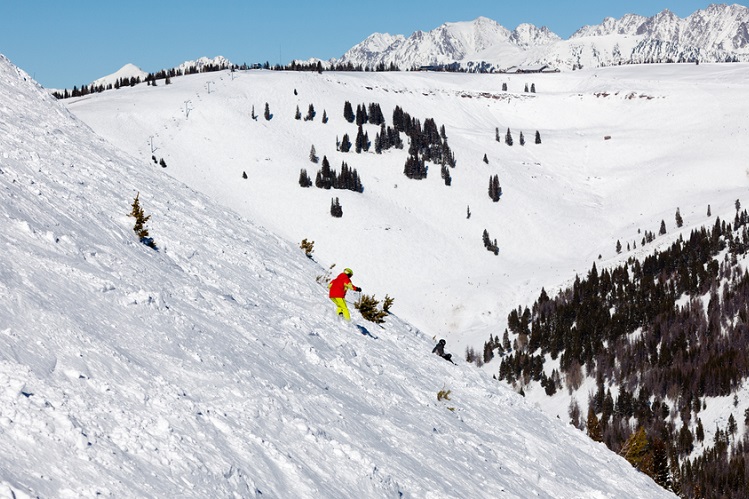As the ski industry loses $2 billion, what is the future of mountain real estate?
Colorado communities feel the impact of ski resorts shutting down
Glen Weinberg //April 13, 2020//


As the ski industry loses $2 billion, what is the future of mountain real estate?
Colorado communities feel the impact of ski resorts shutting down
Glen Weinberg //April 13, 2020//

It is amazing how quickly fortunes have changed. Less than a month ago, Vail Resorts stock peaked, yet over the course of a few weeks Vail lost over $200 million and its stock dropped 42% while the overall ski industry lost almost $2 billion. What does this mean for ski towns where Vail operates? What are the long-term impacts on real estate?
What happened?
On March 14, Governor Polis closed all ski resorts in Colorado, just one day before the busiest travel day for spring break in the Colorado ski towns. Spring break is one of the most profitable times in the ski industry. This closure essentially wiped off a third of the earnings for ski operators. (Note: I am only focusing on Vail Resorts stock as they are large and publicly traded, Alterra is privately held so we can’t see its exact financial impact.)
Short-term impacts
In the short term, Vail’s stock has plummeted, employees have been laid off and the various mountain communities where it operates are reeling with businesses also being shuttered. The economic impact is horrific for places like Vail and Breckenridge where businesses went to zero income overnight.
Long-term impacts
The pandemic could be an interesting disruptor to the industry. The ski industry is built on the model of using smaller “feeder” resorts on the coasts, getting people hooked on an Epic Pass and getting them to come to Colorado or Utah and spending large amounts. Furthermore, this model has been expanded internationally throughout Europe, Asia, Australia and more.
What happens now?
The pandemic has changed consumer perceptions, at least in the short term. I would bet there aren’t many folks that will clamor to ride in a gondola with various international visitors with fears of the virus fresh in their mind.
Ironically, the first cases in Colorado were reported at two Vail resorts, Keystone and Vail. Furthermore, Eagle and Summit counties (Breckenridge, Keystone, Vail, Beaver Creek) have the highest percentages of virus currently in Colorado. This likely doesn’t give folks the warm and fuzzy feelings about their next vacation to the area.
Vail Resorts’ entire model is built on volume in the ski industry and the efficiencies that come from the large number of people. The pandemic will turn this model on its head. Next year will be interesting to see what the booking numbers look like, and how Vail adapts to the changes from the pandemic.
What happens to Colorado ski real estate?
The resort communities throughout Colorado are going to be radically altered from the pandemic. In the past, there was a direct correlation between ski real estate and the actual ski resorts performance. Fortunately, this bond broke after the last recession with Colorado resort real estate not solely driven by the actual ski resort. The resort markets have become more “lifestyle” purchases where people might enjoy skiing, but more importantly they want everything else that comes with a resort town like great restaurants, trails, hospitals, the arts, shopping and more.
The Hamptons effect
Ironically, the pandemic will likely hit the bottom line of Vail resorts and other ski operators heavily, but the real estate side should buck the trend.
There was an interesting article in Bloomberg titled “Hampton houses are now luxury bunkers,“ which shows the huge demand for luxury markets outside of large cities. The same trend is playing out in ski towns throughout Colorado as wealthy property owners flock to the various resort communities to ride out the pandemic.
Living in a ski town myself, I am seeing this trend firsthand, as many second homes have turned into primary residences because people would rather be in a ski town than a penthouse in New York or Chicago.
Summary
Even after the pandemic resides, the desirability of resort property will not only continue, but accelerate as more jobs become location neutral overnight. If someone could work anywhere, why would they choose a market like New York or San Diego when they could live year-round in a ski town with a small town feel with big city amenities along with easy access to an airport for when they need to physically go to the office.
Even though Vail Resorts stock and Alterra will hit a financial speed bump from the pandemic, real estate in Colorado’s ski towns should buck the trend and remain good investments due to increased demand from location neutral employees and very little if any inventory.























